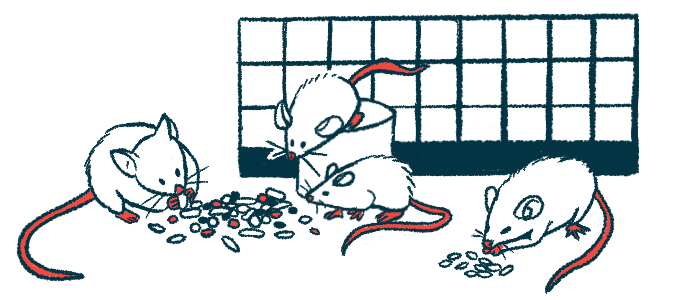Dietary supplement aids behavior in Angelman syndrome mice: Study
Octanoic acid is a fatty acid found naturally in breast milk
Written by |

A diet supplemented with octanoic acid safely improved behavior across multiple tests in a mouse model of Angelman syndrome, a study reports.
A fatty acid found naturally in breast milk, octanoic acid helped reactivate a gene that’s normally suppressed in the brain. This led to improvements in memory and cognition.
“Our findings provide evidence that dietary supplementation with [octanoic acid] should be explored as a noninvasive and safe therapy for [Angelman] during prenatal and postnatal development and into adulthood,” the study’s researchers wrote. The study, “Dietary Intake of Octanoic Acid Restores UBE3A Expression and Improves the Behavioral Phenotypes in a Mouse Model of Angelman Syndrome,” was published in The FASEB Journal.
While everyone inherits a copy of the UBE3A gene from each parent, only the version inherited from the mother is active in nerve cells of the brain. The copy from the father is inactive, or silenced. When the maternal gene copy is mutated, neurons are unable to produce a working ubiquitin protein ligase E3A, resulting in the symptoms of Angelman syndrome.
Unsilencing the paternal copy could be a treatment strategy for Angelman and several experimental approaches have attempted that. So far, problems with that approach have included effects on the activity of other genes, repeated invasive injections being needed, and precisely calibrated dosing being required. This means “safe and feasible approaches suitable for use during early brain development are still lacking,” the scientists wrote.
Octanoic acid, a major fatty acid component in the fluid surrounding the brain and the spinal cord, can cross the blood-brain barrier that normally prevents molecules moving from the bloodstream into the brain. “Thus, during pregnancy and later in gestation, the maternal [octanoic acid] supply during critical brain development is ideal for early treatment of [Angelman],” the scientists wrote.
Effect of OA on UBE3A protein levels
Though evidence shows octanoic acid can be beneficial for treating many diseases, if “[octanoic acid] can influence paternal Ube3a and facilitate the development of new pharmacological and dietary treatments for [Angelman]” remains unknown, wrote researchers in China who tested its effects on the paternal Ube3a gene copy in neurons and the behavior of mice with maternal Ube3a mutations. Ube3a is the mouse version of UBE3A.
Exposure to octanoic acid significantly increased UBE3A protein levels in nerve cells derived from the mouse model, the results showed, suggesting it “unsilences the paternal Ube3a in neuronal cultures.” Further experiments indicated octanoic acid does this by reducing the production of a regulatory RNA molecule.
They then examined how octanoic acid affected living mice.
“Since the optimal treatment window for restoring UBE3A expression in [Angelman] mice has been shown to be in early development, we began supplementation of lactating mouse dams the day the litters were born … so the offspring could obtain [octanoic acid] from the mother’s milk,” the researchers wrote.
Increases in UBE3A due to octanoic acid supplementation were particularly pronounced in the hippocampus, an area of the brain involved in learning and memory. The hippocampal neurons of mice treated with octanoic acid also had lower levels of an enzyme called TOP2B, which helps cells produce proteins from genetic instructions. Reducing the response of TOP2B “may contribute to the reactivation of the silenced, paternal Ube3a allele and associated behavioral improvements in [Angelman] mice,” the researchers wrote.
Mice exposed to octanoic acid performed better on behavioral tests, showing better short-term spatial memory and building more normal nests, indicating hippocampus-mediated cognitive ability, the researchers said.
“[Octanoic acid] intervention that starts during an early prenatal period of brain development could prove more efficacious in reversing the phenotypic deficits observed in [Angelman syndrome] animals,” the researchers wrote.
More research is needed to examine the effective octanoic acid doses and stem cell-derived neurons from people with Angelman could be used as a model, said the researchers said, who note that, based on the results, “[octanoic acid] supplementation could be a promising therapy for [Angelman syndrome], particularly if applied during the early stages of brain development.”






